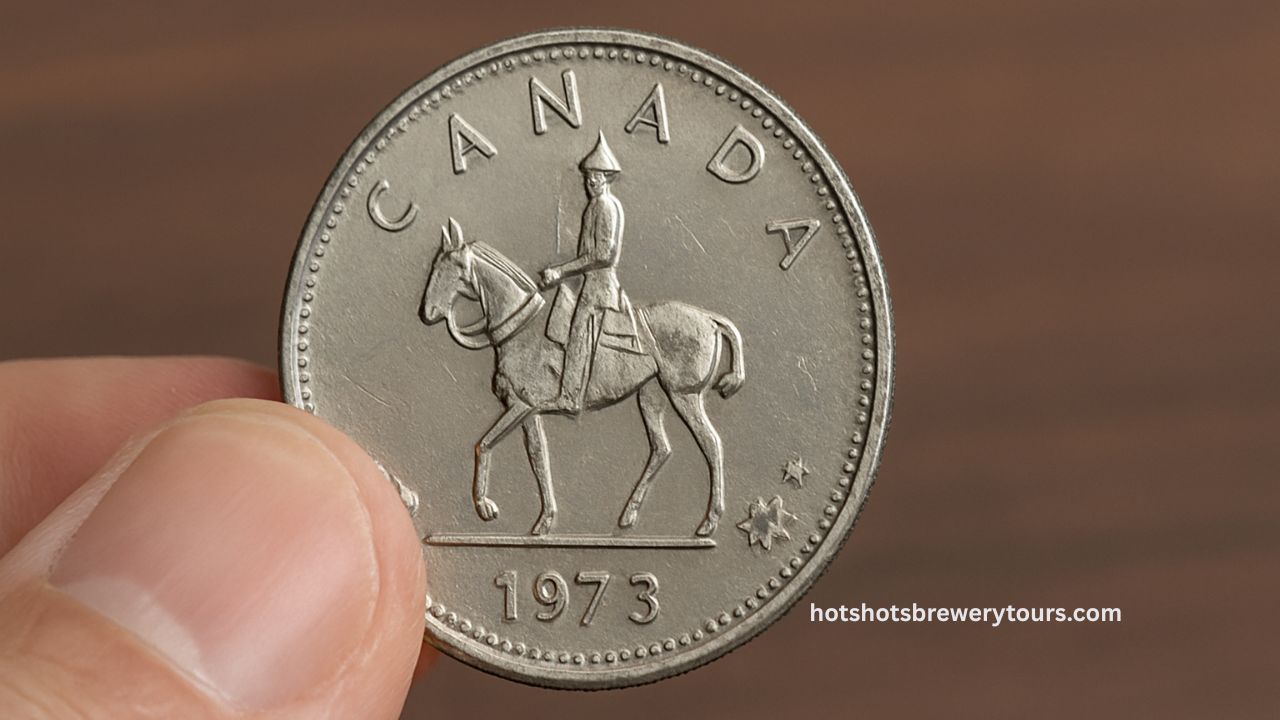In a remarkable discovery, a 1973 Mountie Quarter with the Small Bust variety was recently found tucked away in the pocket of an old fishing vest.
This unexpected find has ignited excitement among coin collectors and enthusiasts, highlighting the enduring allure of rare numismatic treasures.
Understanding the 1973 Mountie Quarter
The 1973 Canadian 25-cent coin, commonly known as the Mountie Quarter, was minted to commemorate the 100th anniversary of the Royal Canadian Mounted Police (RCMP).
Unlike the standard caribou design, this special edition features a mounted officer on horseback on its reverse side.
Interestingly, two distinct obverse designs were produced that year: the Large Bust and the Small Bust. The Large Bust was intended for the commemorative coins, while the Small Bust was the standard design.
However, due to a mix-up at the Royal Canadian Mint, some coins were struck with the Small Bust obverse and the Mountie reverse, creating a rare and sought-after variety.
Differentiating Between Small Bust and Large Bust Varieties
Identifying whether a 1973 Mountie Quarter is of the Small Bust or Large Bust variety involves examining specific features:
| Feature | Small Bust | Large Bust |
|---|---|---|
| Number of Beads | 120 | 132 |
| Bead Proximity to Rim | Farther from the rim | Closer to the rim |
| “A” in “REGINA” Alignment | Points between two beads | Points directly at a bead |
| Mintage Estimate | Approximately 135 million | Approximately 10,000 |
These subtle differences are crucial for collectors aiming to identify and appraise their coins accurately.
Market Value and Collectibility
The value of a 1973 Mountie Quarter varies significantly between the two varieties:
- Small Bust: Due to its high mintage, the Small Bust variety is relatively common. In circulated condition, it typically holds nominal value, often around its face value. However, uncirculated or proof-like specimens can fetch higher prices, depending on their condition.
- Large Bust: With an estimated mintage of only 10,000, the Large Bust variety is exceedingly rare. In circulated condition, these coins can command prices upwards of $75. Uncirculated examples have been known to sell for several hundred dollars, with some exceptional specimens reaching even higher values.
The Significance of the Recent Discovery
The recent unearthing of a Small Bust Mountie Quarter in a fishing vest serves as a poignant reminder of the hidden treasures that may lie unnoticed in everyday items.
While the Small Bust variety is more common, finding one in such a context adds a layer of personal history and intrigue to the coin.
The 1973 Mountie Quarter stands as a testament to Canada’s rich numismatic history. Whether it’s the rare Large Bust or the more common Small Bust variety, each coin carries its own story and significance.
This recent discovery underscores the importance of remaining vigilant and curious, as valuable pieces of history may be closer than we think.
FAQs
How can I determine if my 1973 Mountie Quarter is a Small Bust or Large Bust?
Examine the obverse side of the coin. Count the number of beads around the rim and observe their proximity to the edge. Additionally, check the alignment of the “A” in “REGINA” relative to the beads. These features will help you identify the variety.
Is the Small Bust variety valuable?
While the Small Bust variety is more common and typically holds nominal value in circulated condition, uncirculated or proof-like examples can be more valuable, depending on their condition and market demand.
Where can I sell or appraise my 1973 Mountie Quarter?
You can consult with local coin dealers, attend coin shows, or use reputable online platforms specializing in numismatics to appraise or sell your coin. Ensure you research and choose trustworthy sources to get accurate evaluations.

